THE WINCHESTER-NABU DETECTIVE AGENCY
YEAR TWO: CASE FILE NO. 13-65
AMBER LOVE 06-AUG-2018 Catch up on Year One and previous Year Two cases at the Winchester-Nabu Detective Agency. This work is supported by the generous backers who adore my cat stories at Patreon.com/amberunmasked and they also get first access to what’s happening with my books and podcast. For a one-time tip, you can go to the new PayPal.me.
Also, I’m an Amazon Influencer so you can shop through my personal recommendations on cat things.
Where we left off:
The youths of the neighborhood may have some harmful intentions regarding the wildlife. Amber worries that Gus may be the target should he ever escape again. He’s got a knack for sneaking to the roof and has managed to get his leash unhooked by himself.
A Midsummer Night’s Surprise
We haven’t talked about the Fairy Garden much since the arrival of the new resident, Rosalu, and the attacks on her. Don’t worry, she’s fine. She’s a tough cookie. I haven’t seen Joe Bag O’Peanuts since then so perhaps, she chased him away. Kind of a shame though because he was a good CI for the detective agency against the chipmunk mafia.
Foamy Fairy Fungus:
There we are one morning, taking our rounds to check the property when Gus and I get to the Fairy Garden and see something peculiar. The roof of the Fairy House is a triangular piece of wood that has never been treated with anything to my knowledge. No part of the stump has been treated which is why it’s deteriorating already. The foamy substance started as bright yellow then became darker with brown patches.
As you might suspect, it’s not all that difficult to search on “foamy fungus”. I did that and the results were entertaining. In a typical organic garden, this would be known as “dog vomit fungus” but was renamed “slime mold,” as if that’s more reasonable somehow. However, I’m sure you are aware, this is not a typical organic garden. This is a Fairy Garden. We must consider other possibilities as we investigate.
Blue Eggs:
Around this time, Gus and I also found cracked eggshells. They were the most beautiful shade of blue and consistent with robin eggs and bluebird eggs.
Of course we have robins and bluebirds here in New Jersey. Robins are one of the most abundant birds in North America. Bluebirds however took a dip in number a while back when starlings interfered with their nesting. Robins are lovely to hear and usually indicate the arrival of spring. We have other egg-laying creatures in the vicinity which includes our maging population. Our magical creatures share some characters with the mundane animals. They can have live births or eggs or go through larvae metamorphosis depending on the maging.
Wolpertingers:
We’ve been conducting an ongoing investigation in the anatomy and behavior of American wolpertingers. Like their European counterparts, they have wings, antlers, and fangs. So far, we have not determined if their fangs secret any kind of venom, but since they don’t appear to be connected to reptiles nor spiders, they probably don’t. It’s more of a mammalian fang for tearing through flesh.
What are the wings for anyway? Are they functional? Fallen out of use through evolution? We still don’t know anything about their reproductive system.
Finding: Unknown.
We cannot determine if the American wolpertinger would lay eggs. We’ll keep our investigation into the maging species open and hopefully find more evidence to study.
Fairies:
It stands to reason that blue eggshells found near the Fairy Garden would possibly belong to the blue fairy located there. However, the second eggshell specimen was found way on the opposite side of the property. Of course the fairies must travel around. They have lives after all. They’re not confined to the garden.
Two of the fairy folk, Rosalu Rhys and Eugenia Elmore, have bluebirds as companions. Eugenia has been here the longest. I’m terrible with dates and math, but it’s somewhere around 2006 that she appeared. She arrived with Meg von Fae and a couple others. Eugenia has long blonde hair and prefers to wear blue. He skin color has faded over the years from a medium tan to alabaster white.
As the most mature of the fairies, we believe Eugenia has reproduced before. Being the type of fae with a close connection to bluebirds could also mean that she shares some bluebird DNA, or at least the maging equivalent of a bluebird. It’s also worth noting that the fairies who live close to the house are not the only ones around the mountain.
Humans who write the stories of the fairies probably never even considered that they wouldn’t have the same kind of childbirth as humans. It makes more sense to us that they would lay eggs to protect those delicate newborn wings.
Finding: Fairy Birthing Season is likely.
Hypothesis:
Fairies are egg-laying magical beings that share some characteristics with mammals and some characters with aves (endothermic vertebrates). The “vomit fungus” is actually due to morning sickness of pregnant fairies. It’s fairy puke.

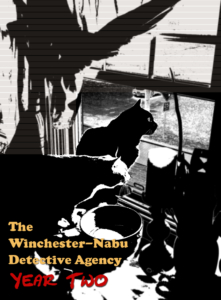
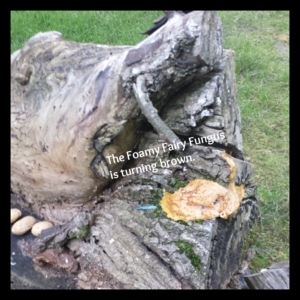
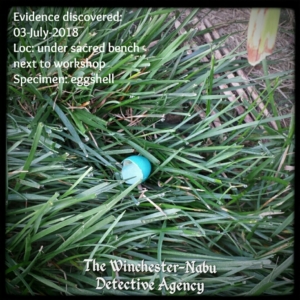
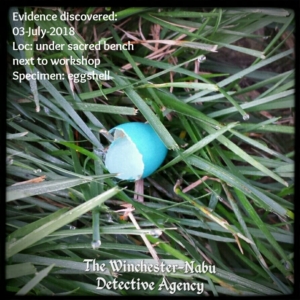
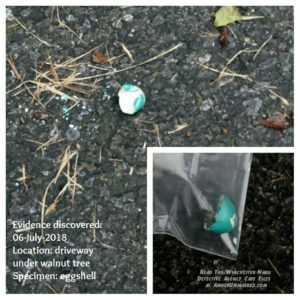
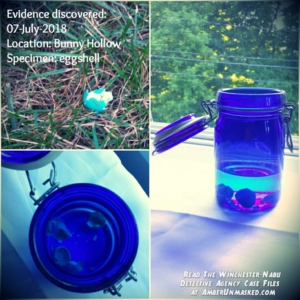
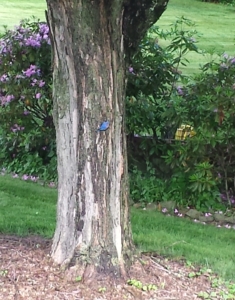
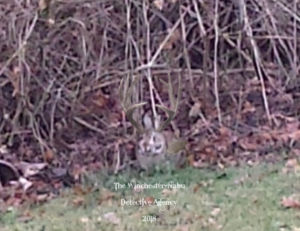
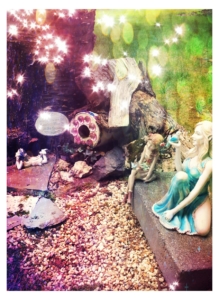
1 Comment on Winchester-Nabu Detective Agency Year Two: Case File No. 13-65
Comments are closed.